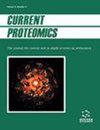异聚化作为调节ACE2受体与SARS-CoV-2刺突蛋白受体结合域亲和力的机制
IF 0.5
4区 生物学
Q4 BIOCHEMICAL RESEARCH METHODS
引用次数: 3
摘要
血管紧张素转换酶2 (ACE2)主要参与血管紧张素的成熟。它也是导致严重流行病COVID-19的严重急性呼吸综合征冠状病毒2 (SARS-CoV-2)的主要受体。现有证据表明,在细胞膜上,ACE2可以与其他膜蛋白形成异聚复合物,包括氨基酸转运蛋白B0AT1和G蛋白偶联受体(GPCR)。众所周知,在四元结构的形成过程中,每个单体的构型都是由其在大分子络合物中的相互作用模式决定的。因此,可以假设,当处于异质复合物中时,face2对病毒受体结合域(RBD)的亲和力可能取决于相关的伴侣。通过已建立的对接和分子动力学程序,在计算机上探索了单分子重塑,以预测ACE2和GPCR之间可能的异二聚体结构,如血管紧张素和缓激肽受体。在异质复合物中,病毒RBD与ACE2结合亲和力的相关可能变化也被估计。这一结果支持了ACE2异聚化状态可能调节其对病毒RBD亲和力的假设。如果实验证实,ACE2异聚化可能有助于解释观察到的个体对病毒感染易感性的差异,并设计新的治疗机会。本文章由计算机程序翻译,如有差异,请以英文原文为准。

Heteromerization As a Mechanism Modulating the Affinity of the ACE2 Receptor to the Receptor Binding Domain of SARS-CoV-2 Spike Protein
Angiotensin Converting Enzyme 2 (ACE2) is primarily involved in the maturation of angiotensin.
It also represents the main receptor for the Severe Acute Respiratory Syndrome coronavirus 2 (SARS-CoV-2) that caused
the serious epidemics COVID-19. Available evidence indicates that at the cell membrane ACE2 can form heteromeric
complexes with other membrane proteins, including the amino acid transporter B0AT1 and G Protein-Coupled Receptors
(GPCR).
It is well known that during the formation of quaternary structures, the configuration of each single monomer is
re-shaped by its interaction pattern in the macromolecular complex. Therefore, it can be hypothesized that the affinity of
ACE2 to the viral receptor binding domain (RBD), when in a heteromeric complex, may depend on the associated partner.
By using established docking and molecular dynamics procedures, the reshaping of monomer was explored in
silico to predict possible heterodimeric structures between ACE2 and GPCR, such as angiotensin and bradykinin receptors.
The associated possible changes in binding affinity between the viral RBD and ACE2 when in the heteromeric complexes
were also estimated.
The results provided support to the hypothesis that the heteromerization state of ACE2 may
modulate its affinity to the viral RBD. If experimentally confirmed, ACE2 heteromerization may contribute to explain the
observed differences in susceptibility to virus infection among individuals and to devise new therapeutic opportunities.
求助全文
通过发布文献求助,成功后即可免费获取论文全文。
去求助
来源期刊

Current Proteomics
BIOCHEMICAL RESEARCH METHODS-BIOCHEMISTRY & MOLECULAR BIOLOGY
CiteScore
1.60
自引率
0.00%
发文量
25
审稿时长
>0 weeks
期刊介绍:
Research in the emerging field of proteomics is growing at an extremely rapid rate. The principal aim of Current Proteomics is to publish well-timed in-depth/mini review articles in this fast-expanding area on topics relevant and significant to the development of proteomics. Current Proteomics is an essential journal for everyone involved in proteomics and related fields in both academia and industry.
Current Proteomics publishes in-depth/mini review articles in all aspects of the fast-expanding field of proteomics. All areas of proteomics are covered together with the methodology, software, databases, technological advances and applications of proteomics, including functional proteomics. Diverse technologies covered include but are not limited to:
Protein separation and characterization techniques
2-D gel electrophoresis and image analysis
Techniques for protein expression profiling including mass spectrometry-based methods and algorithms for correlative database searching
Determination of co-translational and post- translational modification of proteins
Protein/peptide microarrays
Biomolecular interaction analysis
Analysis of protein complexes
Yeast two-hybrid projects
Protein-protein interaction (protein interactome) pathways and cell signaling networks
Systems biology
Proteome informatics (bioinformatics)
Knowledge integration and management tools
High-throughput protein structural studies (using mass spectrometry, nuclear magnetic resonance and X-ray crystallography)
High-throughput computational methods for protein 3-D structure as well as function determination
Robotics, nanotechnology, and microfluidics.
 求助内容:
求助内容: 应助结果提醒方式:
应助结果提醒方式:


